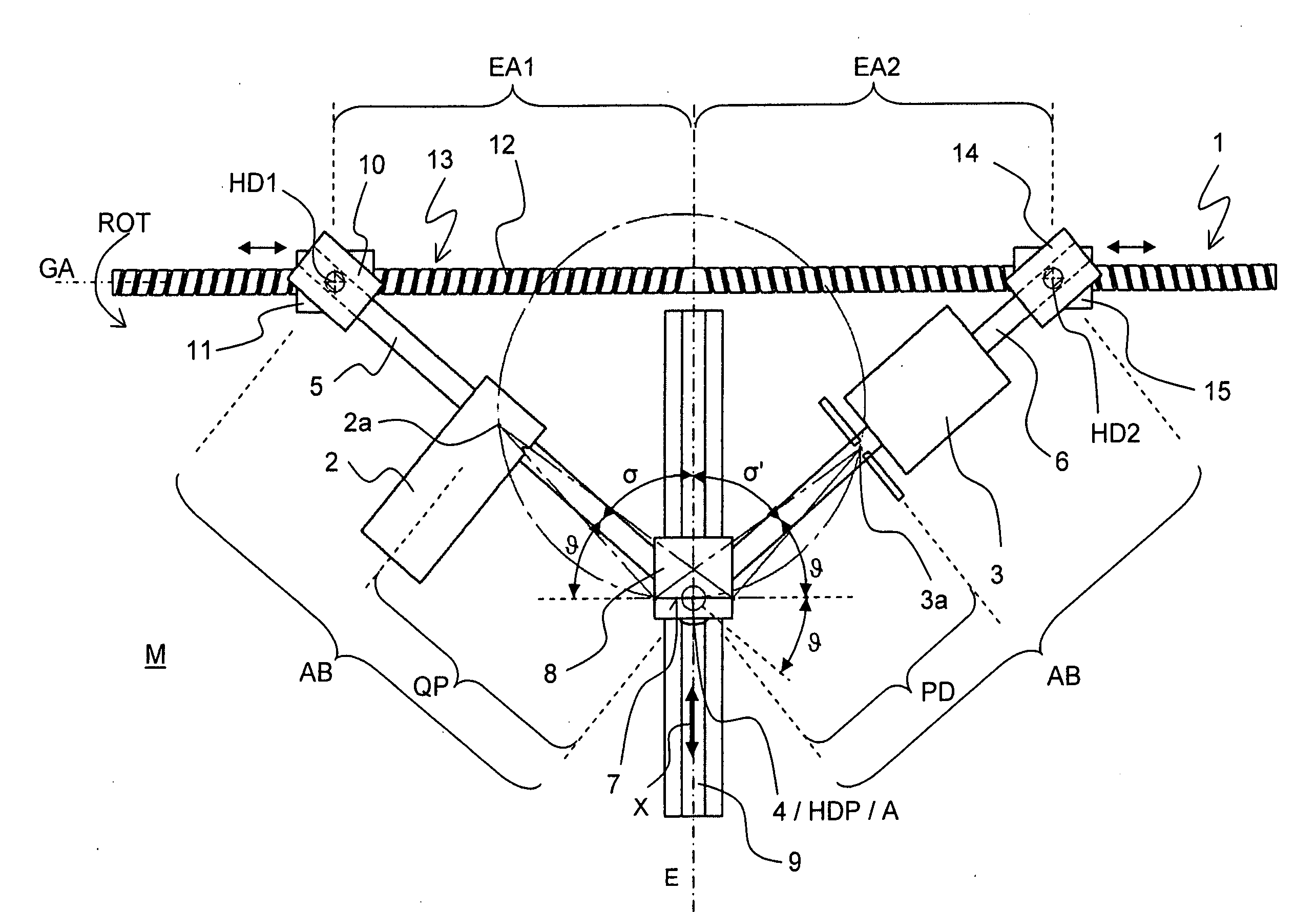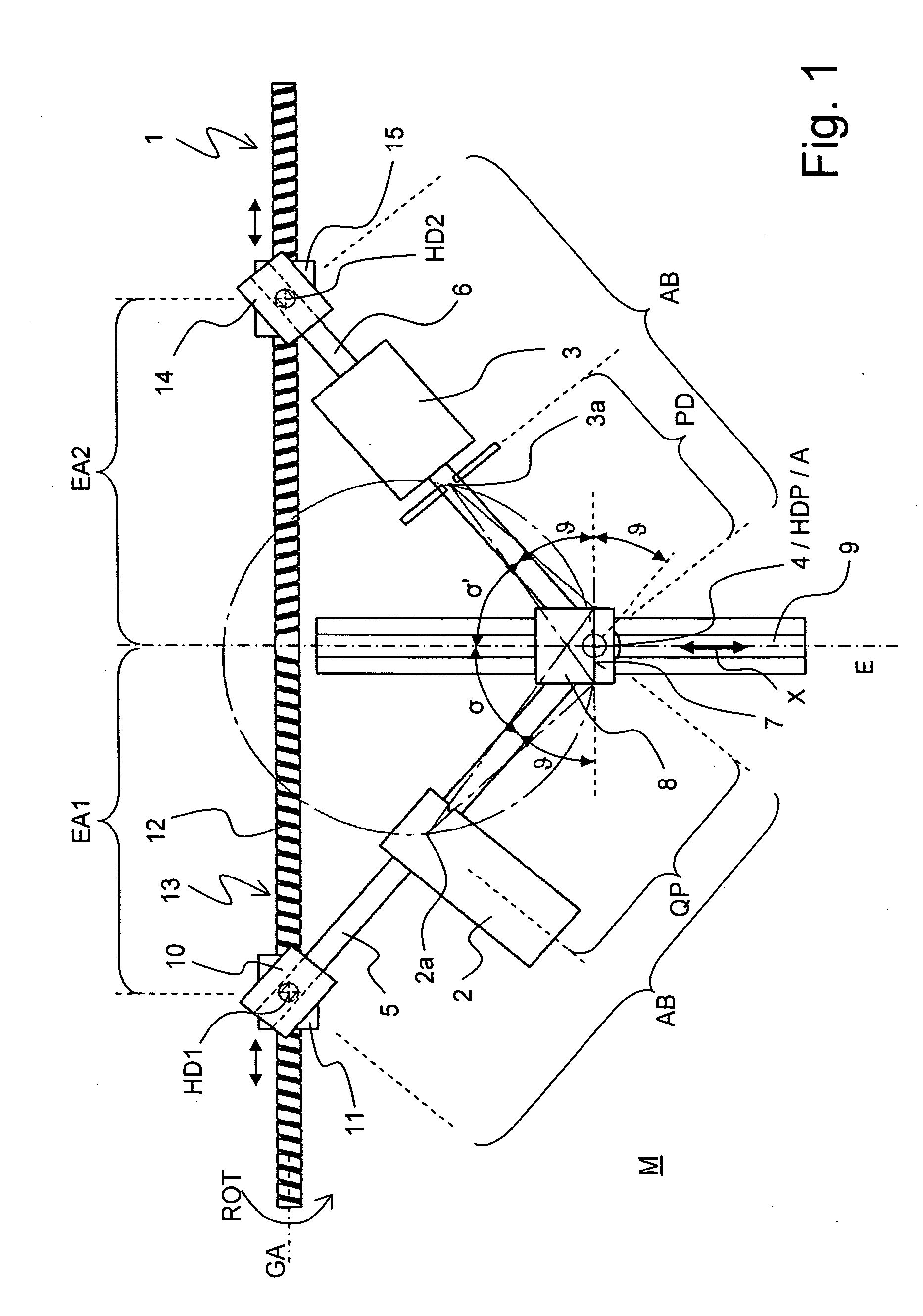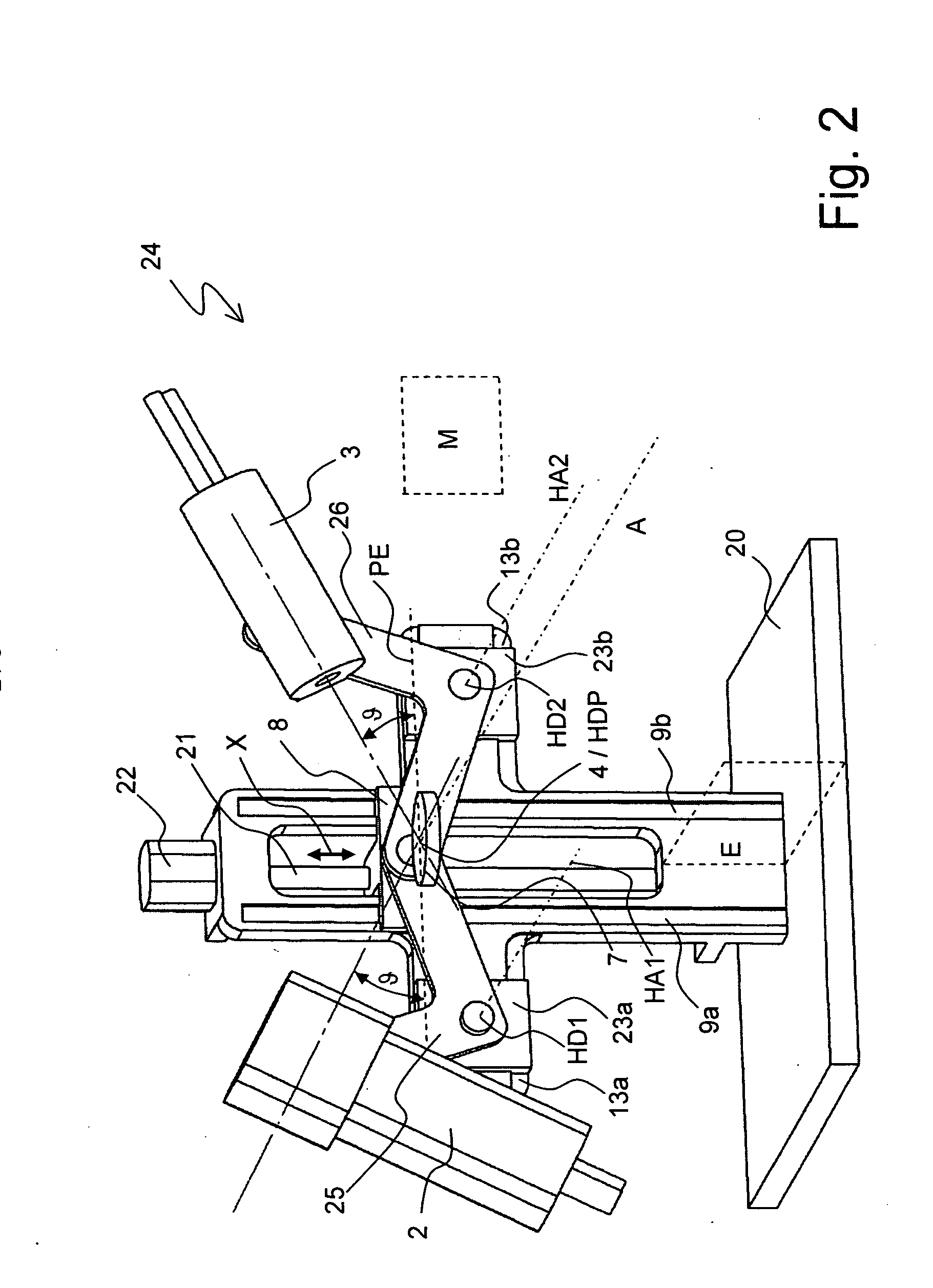X-ray diffractometer for mechanically correlated movement of the source, detector, and sample position
- Summary
- Abstract
- Description
- Claims
- Application Information
AI Technical Summary
Benefits of technology
Problems solved by technology
Method used
Image
Examples
Embodiment Construction
[0042]I. Inventive Diffractometers
[0043]FIG. 1 shows a first embodiment of an inventive diffractometer 1, comprising a source 2 for X-ray radiation, in the present case an X-ray tube, a detector 3, in the present case a zero-dimensional detector with only one registering element for X-ray radiation, and a sample position 4 for arrangement of a sample (in the present case with a flat sample holder 7; the center of the sample holder 7 is associated with the sample position 4). The sample holder 7 is disposed on a carriage 8 that can freely slide in a vertical stationary rail 9.
[0044]The source 2 is rigidly mounted to a first linkage 5 that is disposed to be rotatable about an axis A (that extends perpendicularly to the plane of the drawing). The axis A thereby extends through the sample position 4. The detector 3 is rigidly mounted to a second linkage 6 that is also disposed to be rotatable about the axis A. The point of intersection of the linkages at the location of the axis A is th...
PUM
 Login to view more
Login to view more Abstract
Description
Claims
Application Information
 Login to view more
Login to view more - R&D Engineer
- R&D Manager
- IP Professional
- Industry Leading Data Capabilities
- Powerful AI technology
- Patent DNA Extraction
Browse by: Latest US Patents, China's latest patents, Technical Efficacy Thesaurus, Application Domain, Technology Topic.
© 2024 PatSnap. All rights reserved.Legal|Privacy policy|Modern Slavery Act Transparency Statement|Sitemap



